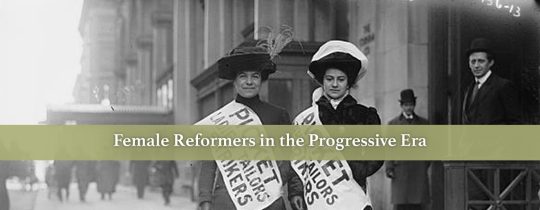How Did Education For Women Affect the Progressive Era? - Blog

How Did Education For Women Affect the Progressive Era?
Education of Women in the Progressive Era
The progressive era saw the first significant improvement in educational opportunities for women. During this time period, women graduated from college, became doctors and lawyers, and earned their PhDs – marking a major shift in how society viewed them.
Despite these accomplishments, however, the progressive era was not without its difficulties. Poverty and oppression remained widespread; people still held that those who worked hard would succeed and that public assistance wasn’t necessary.
Progressives sought to enhance people’s quality of life through various reforms. They typically combined social activism with detailed, hard-nosed research in order to comprehend the underlying causes of the issues they were tackling.
This approach to policymaking had a lasting effect on America. Organizations such as Hull House and labor unions began providing women with education on topics from reading skills to personal hygiene practices in the late 19th century.
Education was a critical step in improving the lives of women and their families. It also gave women an edge in the workplace, creating new possibilities for them.
Women who were educated were better equipped to earn a more secure living and contribute to the economy. This was one of the primary reasons why many policies implemented during the Progressive Era increased women’s wages.
Female education also breaks intergenerational cycles of poverty and disadvantage. A girl who attends school is more likely to stay in school, increasing her future earning potential and decreasing the likelihood that her children will fall into poverty.
Girls who remain in school tend to be more resilient in the face of shocks and hardships, since they are better acquainted with how to adapt to changing conditions. This can provide them with tools for dealing with climate change impacts or natural disasters that threaten their livelihoods and communities.
Education gives women a stronger sense of themselves and the capacity to make life-altering decisions, plus they’re less likely to experience domestic violence. This makes them more likely to become leaders within their families and communities.
Gender bias in schools and the workplace is a major source of discrimination against women. Therefore, it’s essential that schools and the education system are inclusive, reflect gender norms, and actively combat discrimination.
Women’s equality at work is further promoted when they are treated equally by managers and peers. This is particularly crucial when it comes to promotions, pay raises and other career advancement opportunities.
It is essential that women have the opportunity to participate in decision-making and leadership positions within their organization, and are safeguarded against harassment and sexual abuse. This can be accomplished through policies which set quotas for women and enforce laws against gender-based violence.
It is essential for schools to provide safe and separate sanitary facilities for girls. This could include latrines, toilets and washing facilities – particularly when it comes to those who must go through menstruation.




